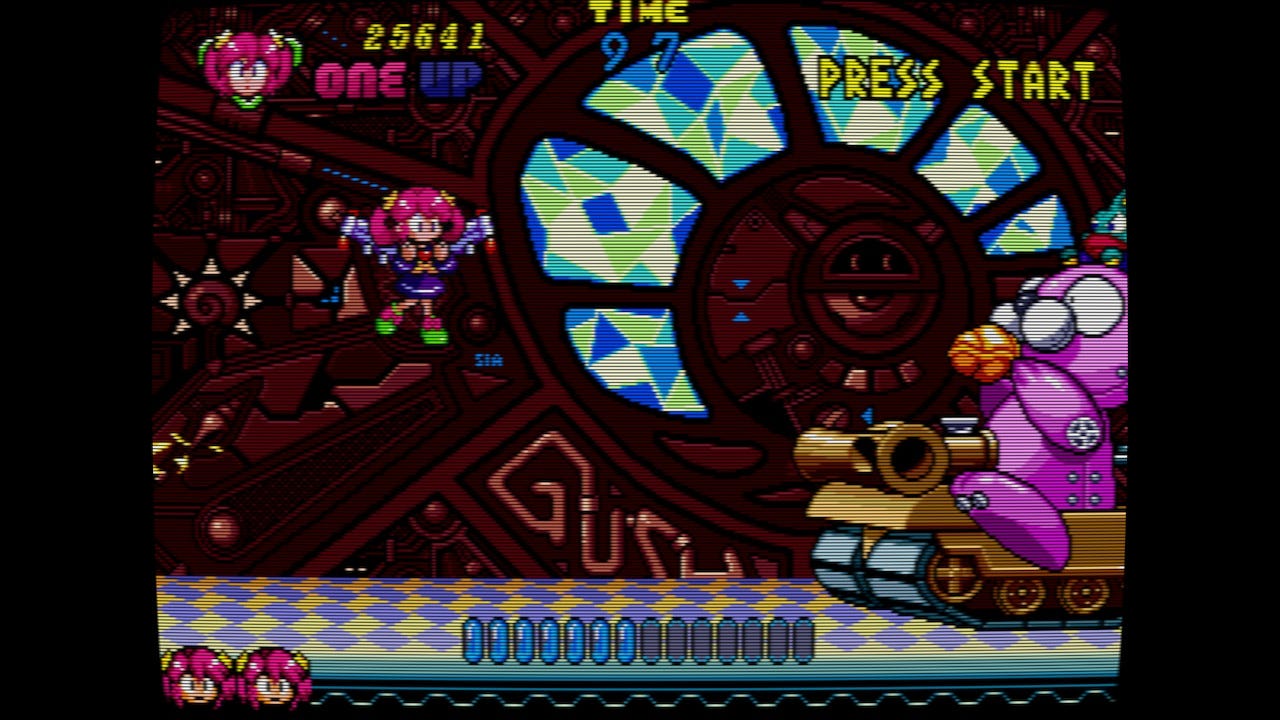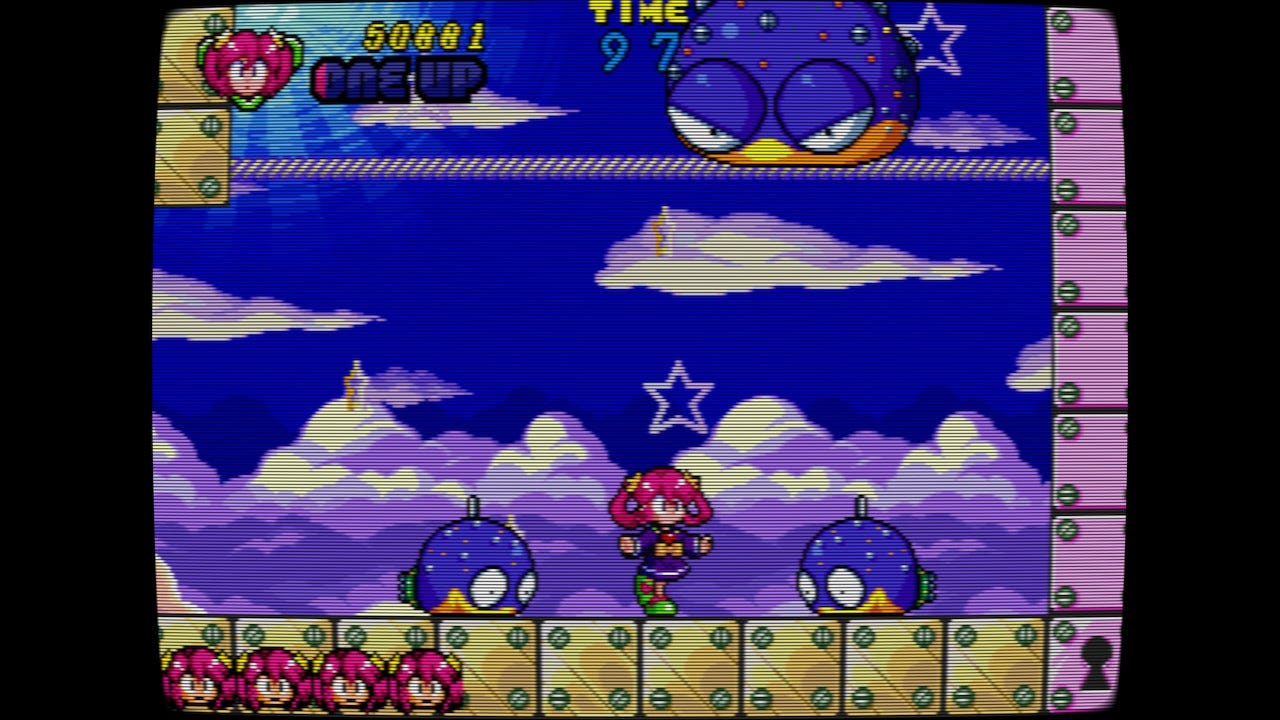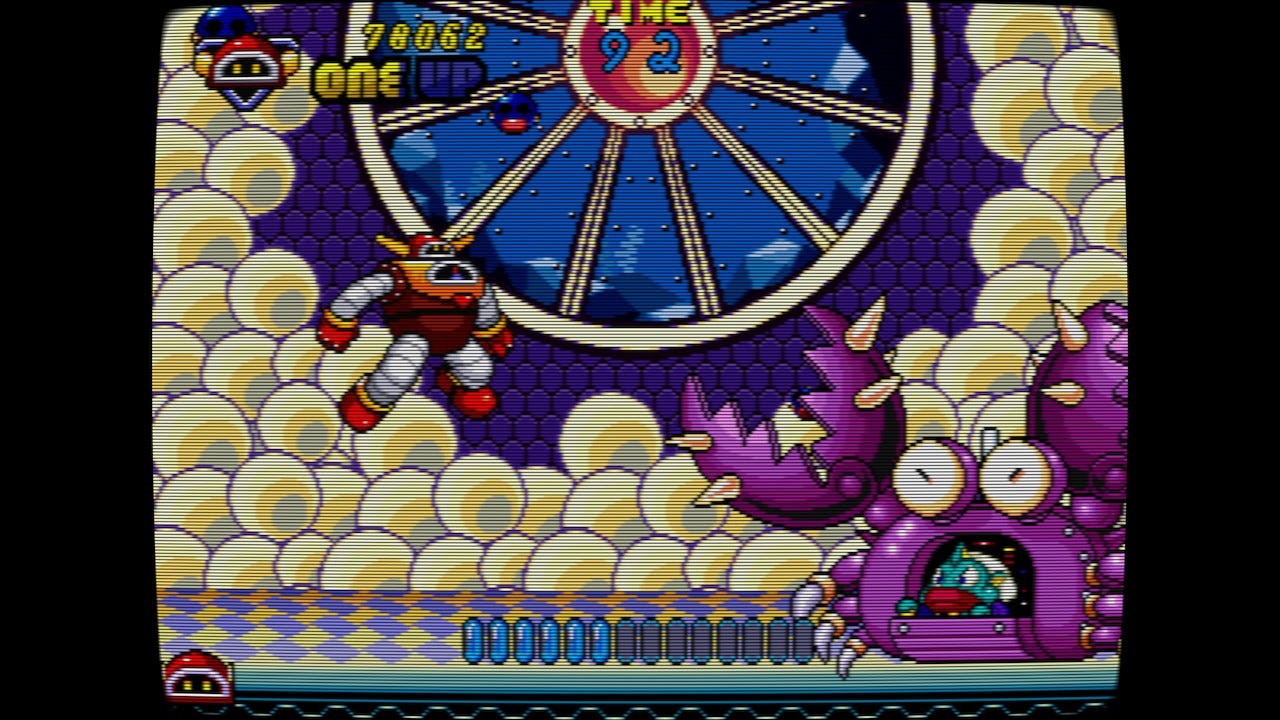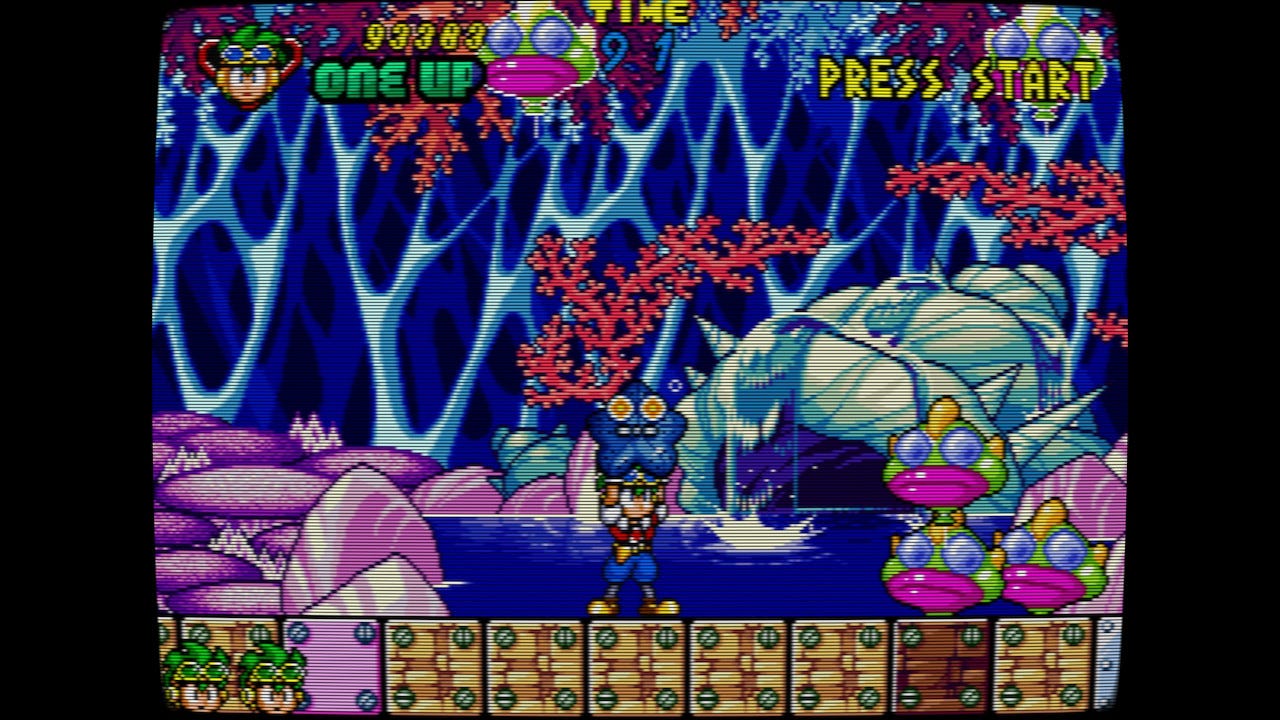Past meets present: Clockwork Aquario
It took 28 years for Clockwork Aquario to actually be released, but the game once slated for arcades finally released on consoles before 2021 ended.
This column is “Past meets present,” the aim of which is to look back at game franchises and games that are in the news and topical again thanks to a sequel, a remaster, a re-release, and so on. Previous entries in this series can be found through this link.
You might not know about Clockwork Aquario at the time of this writing, since it only just released a couple of weeks ago while everyone was raving about their games of the year, but you do know the developer: Westone. While Westone doesn’t exist anymore courtesy a bankruptcy filing in 2014, they did in 1992, when Clockwork Aquario was first developed as an arcade game for the Sega System 18 arcade board. They are responsible for a whole bunch of games, but the ones pretty much everyone is most familiar with are those in the Wonder Boy series: in Monster Land, in Monster World, the Dragon’s Trap, and so on.
Now, 15 years after their previous final game, and seven years after they filed for bankruptcy, Clockwork Aquario has been released. Sega sold the rights to the unreleased game to ININ back in 2017, and after some additional work on the mostly finished title by both ININ and some former Westone staff, it’s now available for purchase. Clockwork Aquario set a Guinness Record for the longest development time before release — 28 years and 81 days — and I imagine that if this were a standard review of the game it would be where I now type something like, “but was it worth the wait?”
Let’s get this out of the way at the start: Clockwork Aquario is $20, and that is going to put some people off. Multiple reviews out there have complained about the price point, too, and while I agree it feels a little steep considering what’s available even at $15, I do think the point is being missed here by some of these reviewers. Clockwork Aquario might be on consoles — Nintendo Switch and Playstation 4, to be specific — but it is an arcade game, with arcade game sensibilities. It’s a platformer where your goal is not just to finish, but to finish the game cleanly, and with a high score. On easy, you get nine credits. On normal, you get five. On hard, you get three. It’s an easy enough title to get through on the lowest difficulty, since you get three lives per credit and can earn additional lives by playing well and racking up high scores, but on normal and hard, you’re going to struggle a bit more.

I’m not saying Clockwork Aquario is nefariously difficult or anything, but it gets tough enough at times that having just three credits can be a problem, even with the game’s short length. It was designed to have you feed quarters into it, you know: arcade games work their best when you can complete them on a single credit, but not until after you’ve put in a bunch of practice to get to that point, so that it feels like you’ve actually accomplished something. If Clockwork Aquario was, I don’t know, 50 cents per credit… well, those quarters start to add up, no? Sure, I’d have preferred $15 for the game, but $20 is fine, considering I’ve already gone back to it quite a few times since purchasing it, and will surely do so again for reasons other than “I’d like to check this out and write about it.” Wait for a sale if you must, after all, that’s what wishlist discount notifications are for. But there is something very enjoyable to me about a game that takes you 20-30 minutes to get through, that you also want to go back to again and again. And Clockwork Aquario is one such game.
You play as one of three characters in Clockwork Aquario: Huck Rondo, Elle Moon, or Gush. Huck and Elle play the same, so it’s really just a preference for looks and a way to make co-op play work, while the robot, Gush, plays similarly but is a larger character. This means there is more of him for enemies to attack or crash into, but Gush can also grab at some of the enemies floating a bit higher, so there are reasons to enjoy playing with that risk in place. Regardless of which you play as — and you can switch characters whenever you use up a credit, anyway — your goal is to defeat Dr. Hangyo and his army of robotic creatures.
The sprites, as you can see in the images, are significant in size. They’re bright and colorful, they’re well-detailed, and I actually have stuck with the CRT filter as I’ve played, too, which is a rarity for me. It helps, maybe, that the original game was designed with a CRT screen in mind: a well-made filter with plenty of adjustments that can be made combined with sprites that were meant to be seen on a CRT monitor means things don’t look off as they often can in these situations, when a retro-looking game tries to pull off a look it wasn’t necessarily designed for. If you’re familiar with Westone games in general, then you know about the kind of art you’re going to see throughout, and won’t be disappointed with what’s here, either.
As for the actual gameplay, it’s kind of a mix of multiple platforming styles all wrapped into one. Your characters can bounce on the heads of enemies like Nintendo’s Mario, or headbutt from underneath like Red Company’s Bonk. They can punch foes to stun them, and then pick up and throw those stunned enemies like in… whichever Treasure platformer you feel like calling to mind, really. Jumping on, punching, or bonking an enemy twice will eliminate them, but you’ll be passing up the opportunity to grab them and throw them at a row of foes, which will cause you to score points on a multiplier and seems to also increase the chances that a downed foe will drop a gem. The gems are worth a considerable number of points — much more than you get for defeating the enemy itself — and they help to fill in a meter which, when full, will grant you an additional life. In addition, jumping and bonking are more inconsistent than punching, in terms of avoiding damage: you’re not going to hurt your character’s fist if you miss a punch, but if you land a jump the wrong way, you might harm yourself on an enemy instead of stunning them.
There are certainly times where you can’t focus on the multipliers as much as you need to simply ensure your survival, and you’ll need all your various forms of attack in order to successfully take down bosses without using up lives and credits, so it’s not like you spend the entire game just grabbing one enemy and then throwing them at other enemies. That’s the most productive method of attack, though, and the most flexible, too, since you can throw in four directions — up, down, left, and right — and do so while crouched or jumping, to boot.
You can take two hits of damage on a single life: after one hit, your character has busted limbs, frazzled hair, or is missing some seemingly vital robotic components. These do nothing to impact the gameplay itself, but are the visual cue for the player to know the next hit means they’ve lost a life. You can refill the missing hit point by grabbing a vial of health potion, which enemies can drop after being defeated. If your health is full and you get a chance to grab a health potion, you can throw it as a weapon the same way you would a stunned foe — since you can get gems that will eventually earn you an extra life this way, don’t think of it as being a waste of a potion, and more like a prize for already having max health.
There is one other item pickup, and that’s a star that grants you temporary invincibility. That’s a significant benefit on its own, but you also get the brief ability to fire off three golden stars at a time at enemies, in a V-shape. You can clear the screen of enemies, of bonus point balloons, you can hit some hard-to-reach targets, you can just kind of blast your way through entire sections of a level until the power of the star runs out: you’ll find every time you pick one of these up is a very welcome experience, because you’re going to get use out of it. Like with the health potions and gems, they aren’t tied to specific enemies or places, so they’re also a nice little surprise whenever the power-up appears, too.
You have five stages to get through, four of which have mid-bosses holding a key to get you past a locked door, and one which has the “final” boss and then the true last boss. While things are pretty easy early, difficulty certainly spikes toward the end: this is where the lack of credits is going to be a problem and force a replay, even if the game as a whole isn’t notably tough. More points in the levels prior to the end means more extra lives to burn up late, so don’t get lazy and sleepwalk through the first parts of the game just because they’re a bit easier.
Do I think Clockwork Aquario is a perfect representation of Westone’s abilites? You’d have to dive into the best of their Wonder Boy titles for that, but this game has its charms all the same. As I said, maybe the $20 price is a little steep on the surface, but don’t let that be the reason you avoid the game: if you are not arcade-minded and can’t as easily justify the price point like I’m able to, just wait for a sale, as one comes to every digital title eventually, and then check out what ININ rescued from obscurity. It’s a nifty little game, and one I’m determined to eventually one-credit clear.
This newsletter is free for anyone to read, but if you’d like to support my ability to continue writing, you can become a Patreon supporter.







Currently on sale for $4! This takes the risk and guesswork out of the original price for me. I've had it on my Deku Deals wishlist since reading your article earlier this year. Looking forward to trying it out. Happy holidays!